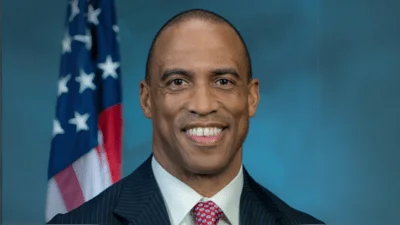Under Secretary for Domestic Finance Nellie Liang addressed the Central Bank of Ireland Conference on Macroprudential Policy for Investment Funds, discussing the increasing significance of non-bank financial intermediaries and their potential systemic risks.
Liang highlighted that investment funds have grown substantially, with collective investment vehicles susceptible to runs nearly tripling in the U.S. since 2006, reaching over $13 trillion by the end of 2022. During the same period, banking assets almost doubled to close to $30 trillion.
"Both in the U.S. and globally, non-bank financial intermediaries have increased in significance," Liang noted. She emphasized that while banks are widely recognized as sources of systemic risk due to vulnerabilities like liquidity mismatch and leverage, investment funds can also pose similar risks despite a less generally accepted view.
Liang pointed out that money market funds (MMFs) have been identified as systemic risks well before the Global Financial Crisis (GFC). "The events during that period and more recently demonstrated without a doubt that they do," she said. The fixed net asset value (NAV) offered by prime MMFs created an inherent first-mover advantage during periods of stress, leading to significant runs during both the GFC and March 2020.
Open-end funds investing in harder-to-trade fixed-income assets were also discussed as potential systemic risks due to liquidity mismatches between daily redemptions and selling underlying bonds. "These funds now hold about 15% of outstanding corporate bonds in the U.S.," Liang stated.
Hedge funds were acknowledged as potential sources of systemic risk primarily due to excessive leverage. Liang referenced events from March 2020 and September 2022 when deleveraging contributed to market dysfunctions.
The U.S., according to Liang, has made significant progress in reducing systemic risks posed by prime MMFs through regulatory reforms initiated by FSOC recommendations. The SEC's revised rules for MMFs implemented starting in 2016 included requiring a floating NAV for institutional prime MMFs and introducing tools like liquidity fees and redemption gates.
Reflecting on offshore dollar MMFs domiciled mostly in Ireland and Luxembourg, Liang expressed concern about their vulnerability to runs despite European Union reforms similar to those in the U.S.
She mentioned ongoing efforts by FSOC member agencies to improve monitoring systems for highly leveraged hedge funds using data collection authorized under the Dodd-Frank Act. Additionally, new rules finalized by OFR aim at better tracking hedge fund leverage through daily data collection on non-centrally cleared bilateral repo transactions collateralized by Treasury securities.
"In sum," concluded Liang, "we have made significant progress in addressing the systemic risk of some investment funds in the U.S., such as prime MMFs, and we have increased transparency into other market segments."





